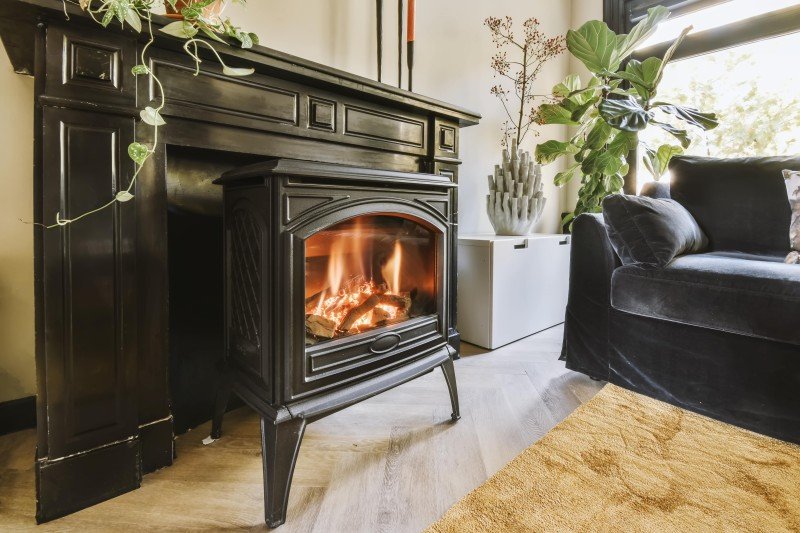Best Value Fireplaces: An In-Depth Guide
The fireplace has long been considered as the heart of a home, supplying warmth, ambiance, and a centerpiece for celebrations. Nevertheless, navigating through fireplacesandstove can be frustrating, especially with budget restraints in mind. This short article presents a useful guide on the best value fireplaces, detailing their types, features, and advantages to assist homeowners make a smart option.
Types of Fireplaces
Fireplaces are available in a range of designs and types, each with different qualities, costs, and benefits. Here's a comprehensive appearance at the most typical kinds of fireplaces available in the market today.
| Kind of Fireplace | Description | Typical Cost | Pros | Cons |
|---|---|---|---|---|
| Wood-Burning | Burn logs to produce heat and ambiance. | ₤ 1,500 - ₤ 5,000 | Genuine experience, natural heat | Requires regular maintenance, less efficient |
| Gas Fireplaces | Uses natural gas or lp to produce heat. | ₤ 2,000 - ₤ 5,000 | Easy to utilize, cleaner than wood | Restricted to gas supply, setup expenses |
| Electric Fireplaces | Simulates flames with LED technology and produces heat via electrical power. | ₤ 200 - ₤ 3,000 | Easy installation, installation flexibility | Less authentic feel, higher operating expenses |
| Pellet Stoves | Usage compressed wood or biomass pellets, providing an environmentally friendly choice. | ₤ 3,000 - ₤ 4,500 | Efficient, low emissions | Needs electrical power to operate, needs storage for pellets |
| Ethanol Fireplaces | Burns ethanol fuel, producing flames that do not need a chimney. | ₤ 300 - ₤ 2,500 | No vents required, portable | Greater fuel cost, security concerns |
Aspects to Consider When Choosing a Fireplace
Selecting the right fireplace is not almost aesthetic appeals; it also includes useful factors to consider. Here are essential aspects to keep in mind:
1. Budget plan
- Identify how much you are prepared to invest. Bear in mind that installation and maintenance costs can accumulate.
2. Space and Size
- Make sure the fireplace fits well within the space, considering both the space available and the heating requirements.
3. Fuel Type
- Decide on the fuel source based upon accessibility, cost, and the kind of ambiance you wish to accomplish.
4. Efficiency
- Choose units with high-efficiency scores to guarantee you are getting the most value for your money in regards to heat output.
5. Visual Appeal
- Pick a design and style that matches existing design and improves the general charm of the area.
6. Laws
- Be conscious of regional policies, permits, and building codes that might impact your fireplace setup.
Top Best Value Fireplaces
Based upon consumer evaluations, professional opinions, and total value for money, here are some of the very best value fireplaces currently readily available in the market:
1. DuraVent Pellet Stove
- Type: Pellet
- Typical Cost: ₤ 2,000
- Emphasizes: Highly efficient with low emissions, making it an exceptional alternative for environmentally-conscious homeowners.
2. Napoleon B36NTR-1
- Type: Gas
- Average Cost: ₤ 2,500
- Highlights: This fireplace is aesthetically appealing and extremely efficient, with a sleek design and adjustable flame.
3. Duraflame Electric Heater Stove
- Type: Electric
- Average Cost: ₤ 200
- Highlights: Affordable and portable, perfect for smaller sized areas or including atmosphere to a space without long-term setup.
4. Genuine Flame Juliet Gel Fireplace
- Type: Ethanol
- Average Cost: ₤ 300
- Emphasizes: An elegant option for modern spaces that needs no venting, making it versatile and simple to set up.
5. Vogelzang VG5790
- Type: Wood-Burning
- Average Cost: ₤ 800
- Emphasizes: Offers a traditional wood-burning experience with a smooth modern design, ideal for those who cherish the traditional atmosphere.
Often Asked Questions (FAQs)
Q1: What is the most affordable fireplace option?
A1: Electric fireplaces tend to be the most affordable in regards to initial purchase price and setup, however can have greater operating expenses compared to gas or pellet systems.
Q2: Are gas fireplaces safer than wood-burning fireplaces?
A2: Yes, gas fireplaces normally produce less emissions and present a lower danger of chimney fires as they don't produce creosote like wood-burning units.
Q3: Can I set up a fireplace myself?
A3: While some electric fireplaces permit simple self-installation, other types, especially gas and wood-burning models, generally require professional installation due to venting and safety concerns.
Q4: How do I keep my fireplace?
A4: Regular upkeep includes cleaning up the chimney (for wood-burning fireplaces), looking for gas leaks (in gas units), and ensuring proper ventilation for electric designs.
Q5: Is an ethanol fireplace a good option?
A5: Ethanol fireplaces are appealing for their modern design and ease of installation. Nevertheless, they can be less efficient and more pricey to run long-lasting compared to other fuel types.
Picking a value fireplace that satisfies your aesthetic choices and useful needs includes comprehensive research study and factor to consider. By understanding various types of fireplaces, their associated costs, and benefits, house owners can make informed choices that will not only fit their spending plan but likewise boost the warm and inviting atmosphere of their homes. Whether choosing an electric, gas, wood-burning, pellet, or ethanol design, the best fireplace waits for to transform your living space.

